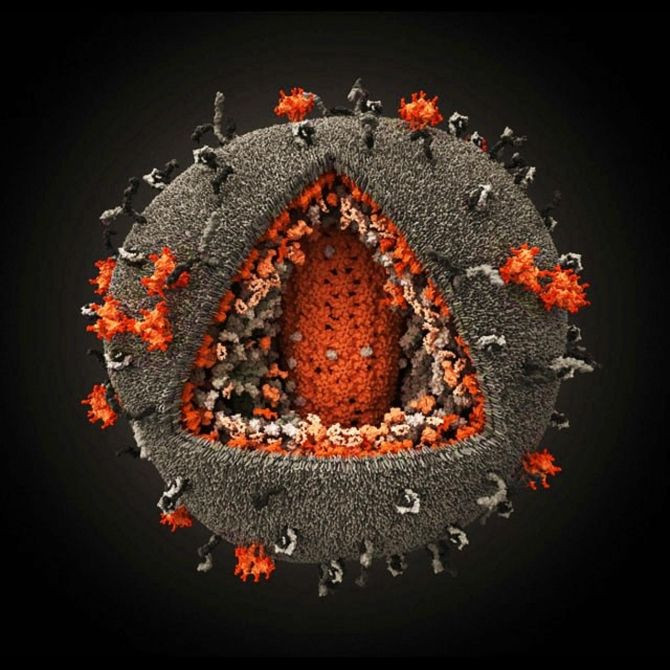Breakthrough: Scientists Reveal How Some Cells Block HIV DNA Replication

Scientists have demonstrated how cells containing the SAMHD1 protein can block HIV replication and halt the progression of AIDS, and may have implications for new therapies for the devastating virus.
A group of international scientists revealed that some parts of the immune system like macrophages and dendritic cells seem to be more resistant to HIV attacks on the immune system.
Previous research has shown that the protein SAMHD1 to be a critical part of this resistance, and scientists said that SAMHD1, which breaks down the building blocks of DNA, reduced the levels of deoxynucleoside triphosphates (dNTPs), building blocks needed to make new copies of viral DNA, and blocked infection.
Researchers found that when SAMHD1 were removed from the cells that initially contained the protein, levels of dNTPs increased which resulted in those cells to be infected by HIV.
"By depleting the pool of available dNTPs, SAMHD1 effectively starves the virus of a building block that is central to its replication strategy," the scientists wrote in the study.
Viruses, which are incapable of replicating on their own, must hijack reproductive molecular material of other healthy cells, by injecting them with the virus’ gene instructions in order to reproduce.
Researchers said that the SAMHD1 protein protects the cell from viruses by nucleotide pool depletion, which destroys the pool of DNA molecular material, which leaves the virus too little building blocks to make its genetic information.
"SAMHD1 restricted infection by hydrolyzing intracellular deoxynucleoside triphosphates (dNTPs), lowering their concentrations to below those required for the synthesis of the viral DNA by reverse transcriptase (RT)," researchers explained.
Macrophages and dendritic cells are “mature cells” that produce SAMHD1 and do not produce new cells.
"It makes sense that a mechanism like this is active in macrophages. Macrophages literally eat up dangerous organisms, and you don't want those organisms to have available the cellular machinery needed to replicate and macrophages themselves don't need it, because they don't replicate. So macrophages have SAMHD1 to get rid of the raw material those organisms need to copy themselves. It's a great host defense," Professor Baek Kim, one of the researchers from the University of Rochester Medical Center, said in a statement as quoted by BBC.
Dr. Jonathan Stoye, virologist at the Medical Research Council National Institute of Medical Research, who was part of the research team that revealed that the chemical structure of the SAMHD1 protein in 2011, said that his hypothesis that the protein worked to deplete dNTP in cells that did no divide was proved to be correct.
Stoye said that some cells like the CD4 cells, prime targets for HIV infection, needed to divide to boost its numbers as part of the immune defense, and if dNTPs were depleted, "cells which are proliferating would be in trouble,” and he was unsure how the anti-retroviral action of the SAMHD1 protein could be harnessed for HIV treatment.
"Viruses are remarkably clever about evading our immune defenses. They can evolve quickly and have developed ways to get around the systems we naturally have in place to protect us. It’s a bit of evolutionary warfare and the viruses, unfortunately, usually win. We want to understand how the enemy fights so that we can outsmart it in the end" said co-investigator Dr. Nathaniel Landau, a professor of microbiology at the Joan and Joel Smilow Research Center at NYU School of Medicine, according to The Times of India.
"Viruses are remarkably clever about evading our immune defenses. They can evolve quickly and have developed ways to get around the systems we naturally have in place to protect us. It’s a bit of evolutionary warfare and the viruses, unfortunately, usually win. We want to understand how the enemy fights so that we can outsmart it in the end" and understanding the way SAMHD1 protects cells may potentially lead to new treatments capable of stopping or slowing the virus’ ability to spread, Landau added.
The study was published on Feb.13 in the journal Nature Immunology.
Published by Medicaldaily.com



























